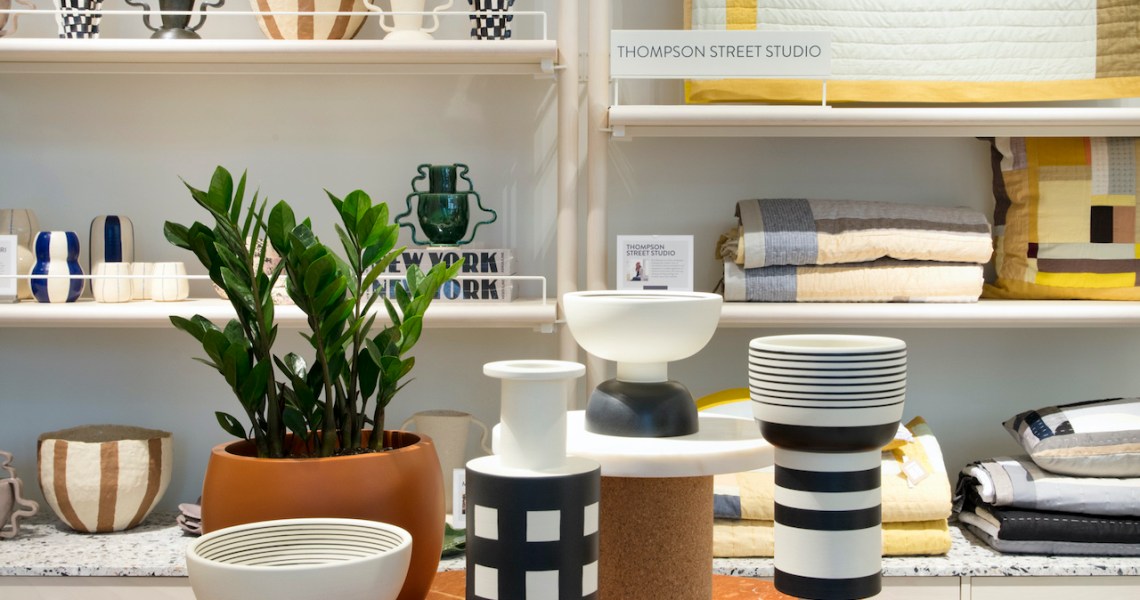As consumers evolve their idea of luxury, more high-end fashion retailers are expanding their focus to home goods to best serve them.
With the pandemic shedding new light on the joys of time, comfort and convenience, staying home — which was forced upon consumers last year — has become a choice pastime. As such, people are nesting to the nth degree, taking the same approach to updating their living spaces as they do to picking out an outfit: with an aim to express their style or creativity or simply to feel cozy. And luxury retailers are providing ample opportunities to do so by expanding their homeware product offerings. Maintaining their reputation as a one-stop luxury shop depends on it.
During Nordstrom’s 2021 third-quarter earnings call on Tuesday, president and chief brand officer Pete Nordstrom said the company’s sales in the home category had increased 95% in the quarter, compared to 2019. In late September, Nordstrom debuted Nordstrom Home NYC, serving as a first look at its updated home concept for its stores and site. The two-story department within its New York flagship was designed by Olivia Kim, Nordstrom vp of creative projects and home. At launch, it included 1,400 products by 50 new brands, from Casper to Great Jones.
Also on Tuesday, during Net-a-Porter’s virtual press preview of its spring 2022 trends, senior market editor Libby Page said the company had extended its homeware selection in November 2020 and remains focused on growing the category further. In the last year, it picked up 50 new home brands and increased its product assortment in the category by 3,000%. A home-focused campaign it ran in August drove a 345% sales boost for the month.
As with its fashion selection, Net-a-Porter seeks to provide opportunities for discovery within the home range, largely by offering up product exclusives and “cult collaborations” with buzzy labels, Page said. The company has already sold exclusive home styles by Khaite, Gabriela Hearst and Loewe, among others.
“Our customer is really looking for fashion for the home [that’s] an extension of their personal style,” Page said. She later noted, ”We’ve seen no price resistance here.”
According to Lea Cranfield, chief buying and merchandising officer at Net-a-Porter, “Net-a-Porter has grown to become so much more than just a fashion destination.”
Ad position: web_incontent_pos1
Meanwhile, during a discussion that will serve as this week’s Glossy Podcast, MyTheresa CEO Michael Kliger said, “We really want to be the go-to for lifestyle in luxury and attract an even bigger share of wallet from our existing customers.” The company plans to expand its home product assortment in 2022. And, MatchesFashion reported earlier this month that sales in its home category, which features 75 brands, are up more than 30% this year.
A quick scan of luxury retailers’ holiday gift guides is telling, in regard to their current focus on home — though it should be noted that shoppers often gravitate toward gifts that don’t require knowledge of someone’s size. Twenty-six percent of Farfetch’s “101 Most-Wanted Gifts” are in the home category, as are 32% of Neiman Marcus’ gift recommendations and 23% of Moda Operandi’s.
Traditional fashion designers, too, are expanding to the home category and further fueling the trend. Joseph Altuzarra entered the home category on Tuesday with a small collection including a throw and pillow. Tanya Taylor launched home products in June.
The moves across the industry are no doubt data-driven: Recent reports show that the home furnishings market continues to grow, even as pandemic restrictions ease. According to a September ResearchAndMarkets.com report, the global market is expected to increase to 8.5% from 2020 to 2021, to $401 billion. Individually, the luxury furnishings market will continue to grow, driving $30.3 billion in annual sales by 2023, according to Statista.




